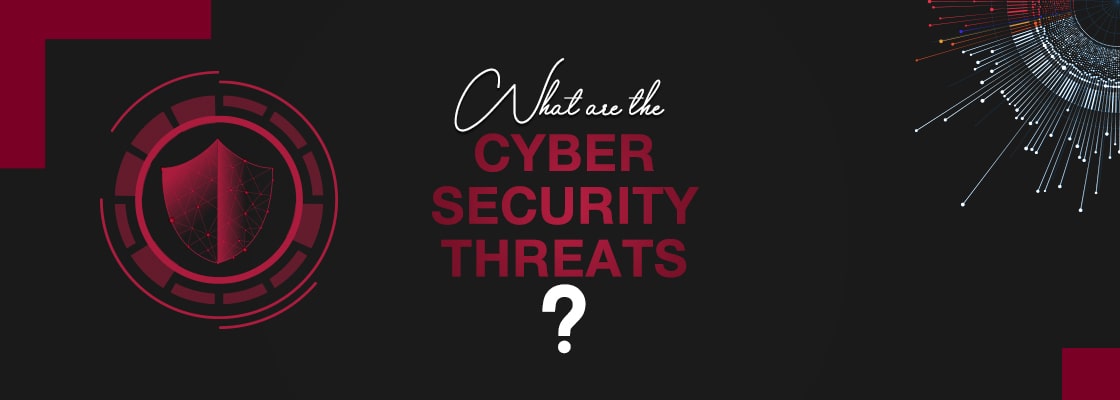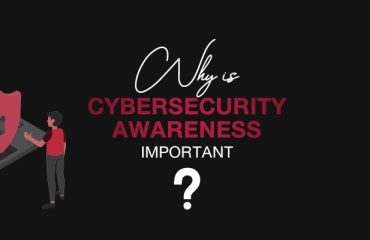
Cyber threats are malicious acts intended to damage, steal, or disrupt digital life in general. Cyber-attacks include threats like computer viruses, data breaches, and denial-of-service (DoS) attacks. Each day cyberattacks target businesses and private systems, and the variety of attacks has increased rapidly. Individuals are also vulnerable to cyberattacks, often because they store their personal information on their mobile phones and use insecure public networks.
What are the threats to cyber security?
A cyber security threat is an action performed by an individual with the intent to steal data and damage or disrupt computing systems. Cyber threats include malware, social engineering, man-in-the-middle (MitM) attacks, denial of service (DoS), and injection attacks.
There is no company that is immune from cyberattacks and data breaches. In some cases, cyberattacks can even wipe out a company’s computer system.
The threat of cyber-attacks can come from a variety of sources, including hostile nation-states and terrorist groups, individual hackers, and trusted individuals who misuse their privileges.
You must implement security precautions to protect your data as cyber threats become increasingly sophisticated.
What are the types of cyber threats?
The potential harm posed by all threats is not equal, but the company will take all threats seriously, evaluate them, and document them.
Malware
The most common type of cyberattack consists of viruses, worms, Trojan horses, spyware, and ransomware. Malware is usually spread by untrusted websites, emails, or unwanted software downloads. The software installs on a target system, collects sensitive data, manipulates and blocks network access, and may destroy data or shut down the system.
Malware attacks can be classified into the following types:
Trojans: a piece of malware or code that pretends to be a legitimate program or file in order to trick you into executing it on your device. Trojans are designed to damage or steal your organization’s data or do some other harm to your network.
Spyware: Using this software, attackers can gain access to your computer activities covertly.
Viruses: As the application runs, malicious code is executed. When a piece of code injects itself into an application, it executes.
Worms: When installed in a network, worms can launch distributed denial of service attacks by exploiting software vulnerabilities and backdoors.
Ransomware: An attacker typically demands a ransom in exchange for a decryption key to restore access to a user or organization that has been denied access to its own systems or data. However, it is not guaranteed that paying the ransom will restore full functionality or access.
Rootkits: a remote administrator can access a computer remotely using software injected into applications, firmware, operating system kernels, or hypervisors. In a compromised environment, the attacker can start the operating system, gain complete control, and install additional malware.
Phishing
In phishing attacks, fake communication, such as an email, is used to trick the victim into opening the email and following the instructions within, such as supplying a credit card number. The purpose of these attacks is to steal sensitive information, such as credit card numbers and login credentials, or to install malicious software on the victim’s computer.
In most cases, hackers send out phishing emails that appear to be from trusted sources such as PayPal, eBay, financial institutions, or co-workers and friends. By clicking on the links in the emails, users are redirected to fraudulent websites that collect personal information or install malware on their computers
MITM attacks (Man-in-the-Middle)
As a result of these attacks, malicious actors intercept incoming messages, filter and steal sensitive information, and then return different responses to the original sender.
DDoS (Denial of Service)
DDoS attacks overload a company’s servers with requests in an attempt to bring down its website.
DDoS attacks can overload your servers, causing them to slow down significantly or go down temporarily. Customers cannot access your website or place orders during these shutdowns.
Injection Attacks
An injection attack exploits a variety of vulnerabilities to insert malicious input directly into the code of a website.
By injecting SQL commands into an end-user input channel, an attacker can send his data to the database and execute any SQL commands he has entered. Due to the fact that most web applications use databases based on Structured Query Language (SQL), they are vulnerable to SQL injection attacks.
There is also XSS (cross-site scripting), where the attacker inserts malicious JavaScript into the target’s browser. The browser executes the code, allowing the attacker to redirect users to a malicious website or steal session cookies to hijack a user’s session. If an application doesn’t remove JavaScript code from user inputs, it is vulnerable to XSS.
Supply Chain Attacks
Supply chain attacks are particularly severe because the compromised applications are signed and certified by trusted vendors. Software vendors are unaware that their applications or updates are infected with malware during a software supply chain attack. Code running with malicious privileges and trust is treated as if it were part of the compromised application.
In order to compromise build and update processes, modify source code, and hide malicious content, attackers look for non-secure network protocols, server infrastructure, and coding techniques.
Cybersecurity risks: How can companies manage them?
Organizations of all sizes are facing increasingly serious cybersecurity threats. In order to fend off cyberattacks effectively, you’ll need to implement a risk management program.
Making your entire firm aware of cyber threats begins with developing a cybersecurity risk management strategy, and distinguishing between strategic and operational risks
It is important for IT workers to construct a robust cybersecurity architecture that complies with all relevant regulations, standards, and best practices.



